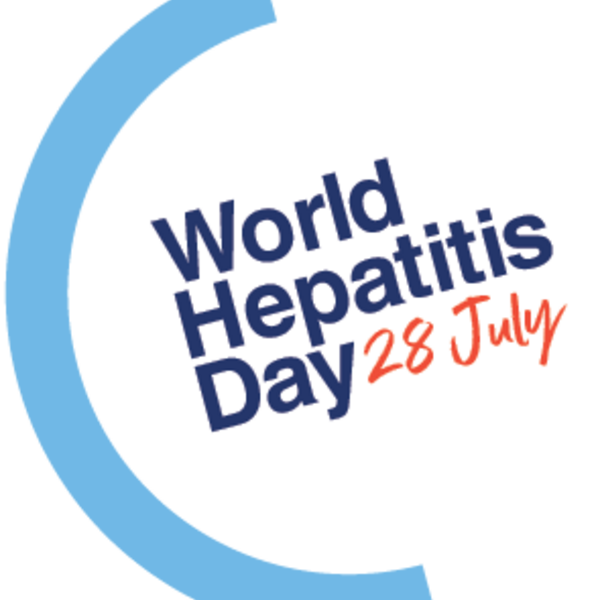
World Hepatitis Day 2025: Advancing a Cure to Protect the Next Generation
Each year on July 28, we come together to recognize World Hepatitis Day, a global moment to raise awareness, celebrate progress, and renew our commitment to eliminating viral hepatitis. At NASTAD, we are proud to work alongside advocates, policymakers, and public health leaders to advance equitable access for solutions to the hepatitis B and C viruses (HBV and HCV.)
This year marks a major policy milestone in the United States: the Cure Hepatitis C Act of 2025, a bipartisan effort introduced by Senators Bill Cassidy (R-LA) and Chris Van Hollen (D-MD). The Cure Hepatitis C Act of 2025 offers a comprehensive strategy that includes expanding hepatitis C access to testing and treatment, strengthening public health infrastructure at the state and local levels, and implementing a cost-saving subscription model to purchase hepatitis C medications through registered pharmacies, correctional systems, and the Indian Health Services. The legislation empowers community health centers, opioid treatment programs, and correctional facilities to integrate hepatitis C services and advance hepatitis B prevention and treatment efforts, including support for point-of-care testing and linkage to care. NASTAD played a key role in supporting the development of this legislation and continues to advocate for its passage to help ensure everyone with HCV has access to timely, life-saving care.
Reaffirming the Importance of the Hepatitis B Birth Dose
As we highlight our progress, it’s also crucial to reinforce the need to protect evidence-based prevention efforts, particularly the hepatitis B birth dose vaccine. Recognized as one of the first anti-cancer vaccines, the HBV vaccine is part of the national immunization schedules in 190 countries, including the United States. However, the hepatitis B birth dose specifically is only included in 113 countries. Studies show that administering the first dose within 24 hours of birth, followed by at least two subsequent doses, is 90% effective in preventing perinatal transmission. The introduction of the hepatitis B vaccine in the childhood vaccination schedule in 1991 in the United States has been the primary driver of the substantial decrease in prevalence of hepatitis B among persons 6–19 years of age. Despite decades of safety data and the successful reduction of childhood hepatitis B in the U.S., the universal hepatitis B birth dose recommendation is under threat. Global research has shown that even in regions where public health infrastructure is burdened by substantial health system barriers such as sub-Saharan Africa1,2,3, southeast Asia, and western Pacific countries, the HBV birth dose vaccine significantly reduced the risk of vertical transmission. Reversing course and implementing a targeted hepatitis B vaccination program has beendemonstrated to be ineffective in countries such as Greenland, Brazil, and Angola. Inclusively, this approach was shown to complicate guidelines and requires substantial efforts for selecting infants at risk in addition to stigmatizing pregnant people. Additionally, HBV prevention strategies that include interventions to prevent perinatal transmission are considered very cost-effective, with an incremental cost-effectiveness ratio of $6957 per quality-of-life-adjusted life year saved. In the United States, jurisdictions such as Hawaii have decades of experience demonstrating the life impact of the hepatitis B birth dose. In 1992, Hawaii implemented routine infant hepatitis B vaccination and according to Perz, et al. the last reported case in a child aged <15 years in Hawaii occurred in 1996. Additionally, the hepatitis B vaccination prevents hepatitis D, a virus that requires the hepatitis B virus for its replication. Globally, hepatitis D affects nearly 5% (an estimated 12 million) of people who have chronic HBV. On July 27, 2025, the International Agency for Research on Cancer (IARC) classified hepatitis D as carcinogenic to humans. According to Dr. Meg Doherty, incoming Director of Science for Health at the World Health Organization, “this reclassification marks a critical step in global efforts to raise awareness, improve screening, and expand access to new treatments for hepatitis D.”
Looking Ahead
World Hepatitis Day is a time to reflect, but more importantly, to act. With the Cure Hepatitis C Act of 2025 and renewed attention to hepatitis B prevention such as immunization, let’s build on this momentum with evidence-based policies, person-centered care and community-led action. As Dr. Michelle D. Fiscus, MD, FAAP, pediatrician and Chief Medical Officer from the Association of Immunization Managers states “The recommendation to provide hepatitis B vaccination to every baby not only significantly reduces the chance of a baby contracting hepatitis B from a mom who may not have been tested or know she's infected, but also gives us a chance to eliminate hepatitis B disease in the U.S completely.” To advance ongoing access to the hepatitis B birth dose and more broadly work towards our viral hepatitis elimination goals, here are actions NASTAD recommends.
Action Items
- Spread the word! Share resources on World Hepatitis Day and World Health Organization hepatitis elimination goals with community partners and with the public.
- Share best practices! Share successful hepatitis B immunization activities, especially those related to the hepatitis B birth dose, conducted in your jurisdiction by emailing us at hepatitis@NASTAD.org with best practices and/or data that contribute to the impact and continued need for hepatitis B immunization.
Resources:
- WHO urges action on hepatitis, announcing Hepatitis D as carcinogenic
- World Hepatitis Alliance resources
- Coalition for Global Hepatitis Elimination
World Hepatitis Day Resources:
- Global Progress Toward Hepatitis Elimination: New Reports Now Available
- Universal Infant Vaccine Birth Dose Saves Thousands of Lives: A response from the Hepatitis B Foundation
- Eliminating Hepatitis B From Day One: The Power of Hepatitis B Birth Dose Vaccination